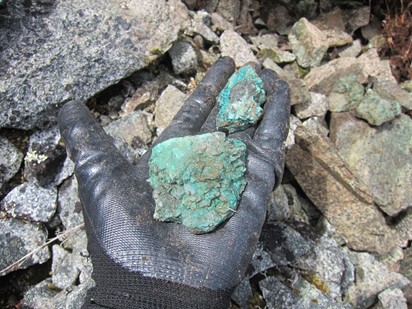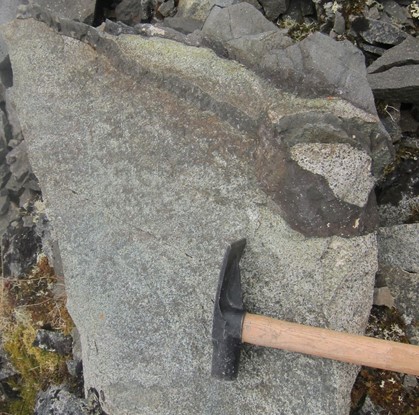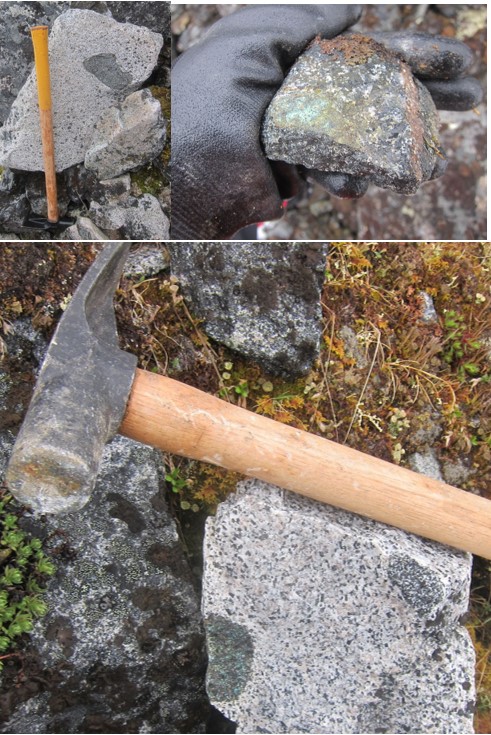By Natasha Morris, Project Geologist

Malachite and azurite showings on quartz vein grab sample- Atsutla Property
The process of creating ore deposits requires many factors to line up. A few of these factors include, heat, pressure, fluid migration, and chemistry. That said, certain tectonic settings are more prone to these factors than others, most of which at some point in time had similar systems to volcano formation.
Volcanoes are eloquently linked with heat, pressure, and fluid creation, making that part pretty easy to distinguish; however it gets complicated. The chemistry and more specifically geochemistry of the fluids needs just the right ingredients, and cooking temperature/pressure…to create ore deposits.
Most systems need silica-rich and metal-rich fluids. The silica sources for the fluids are from the coarse crystalline roots of the volcano, intrusive granite like underworkings; and the metal-rich fluids can also be sourced from the intrusives, but are more so affiliated with more lower-silica byproducts of volcanoes, referred to as mafic intrusions and eruptions. To get both of these in a fluid takes a long time…even on the geological scale!
Our Atsutla Gold Project is situated on an old paleo-arc, convergent tectonic setting, with evidence of volcanic activity occurring as old as the Mesozoic to the Eocene, essentially over a ~150 million year period. Check out the photos below for examples of where we see evidence of mafic intrusions in the silica-rich Christmas Creek batholith.
For more information on our Atsutla Gold Project please check out our website:
https://www.trailbreakerresources.com/atsutla-gold-project/

Christmas Creek batholith showcasing mafic dyke invasion with entrained batholith host clast – Atsutla Property

Boulders and grab samples showing mafic clasts with malachite staining- Atsutla Property
A legal disclaimer for Trailbreaker Resources can be found here: Disclaimer
